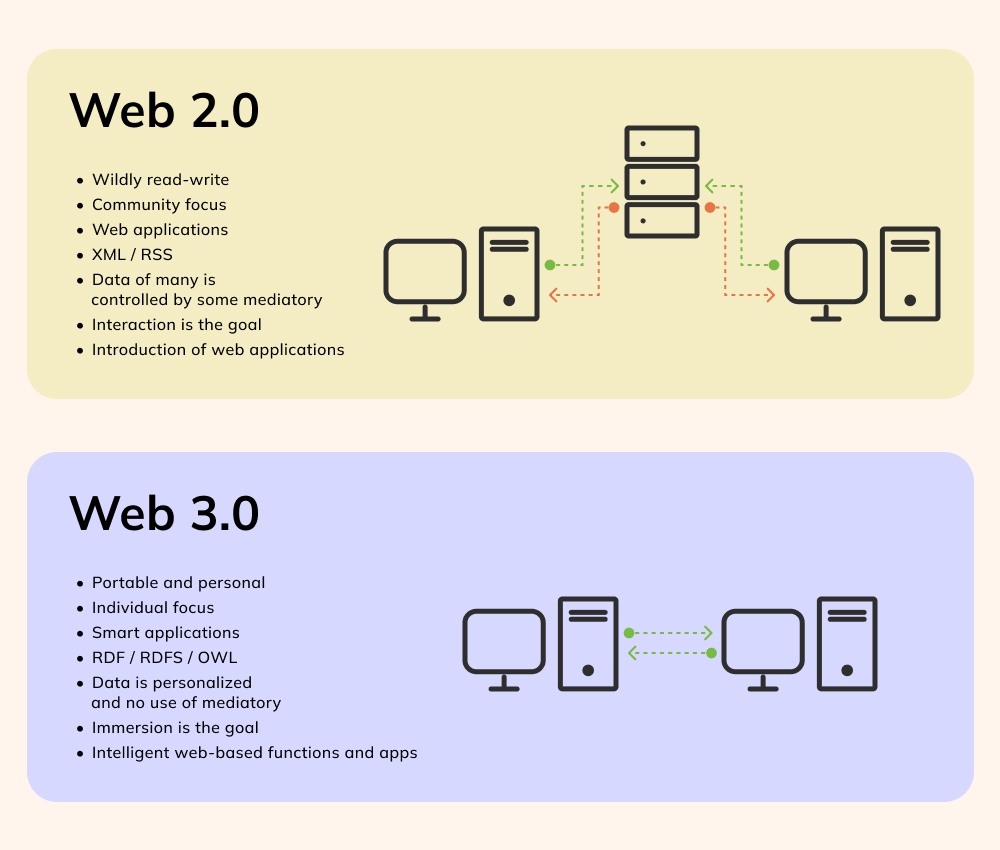Web 3.0 is undoubtedly gaining traction among investors and institutions. So now is the time to start considering how to invest in the new generation of internet. As you can see, Web 3.0 is definitely worth investing in, and the matter of the investment spheres is already more sensible.
To get the right answer to this question, you should have a basic understanding of what Web 3.0 aspects will most satisfy your interests and be appropriate for investments.
For instance, one of the worthwhile investment forms in Web 3.0 is the blockchain itself. It will provide the following parameters for Web 3.0.
Investing in Web 3.0: Cryptos
Web 3.0 crypto tokens are increasingly capturing investors’ interest. Cryptocurrency is expected to play a key role in selling and buying products or services on Web 3.0, as well as in gaming and investing. With all this in mind, cryptocurrencies can become an excellent investment within Web 3.0.
Web 3.0 is expected to integrate such cryptos as ETH, Helium, Theta, Polkadot, Filecoin, Kasuma, etc.
Investing in Web 3.0: NFTs
The Recycle Bin, Cryptopunks, and other super popular NFTs make only a tiny part of what an NFT can actually signify. Firstly, these tokens can be used as a currency form to pay content creators. Secondly, like vaccine passports, NFTs can serve as document verification since they include historical ownership data.
Furthermore, you can invest and use NFTs in logistics to inform customers about how long it takes to produce and deliver goods. Generally, these tokens can give you much potential – they are viable investment options for the future generation internet Web 3.0.
Investing in Web 3.0: Domain Names
Domains in Web 3.0 will most certainly differ from the standard DNS addresses. Although those will be multiple-character hex strings, users can simply remember a shorter phrase. For example, a decentralized crypto domain will be a human-readable address indicating not the IP address but the user’s crypto wallet. These domains are NFTs or digital certificates of validity by their nature and have Web 3.0 extensions as .eth, .dao, and .crypto.
So, right now, it is high time to buy a selection of potentially lucrative domain names to sell them for a profit when the time comes. The limited supply vs. growing demand and the big return on your investment help domain names play a special role in Web 3.0































